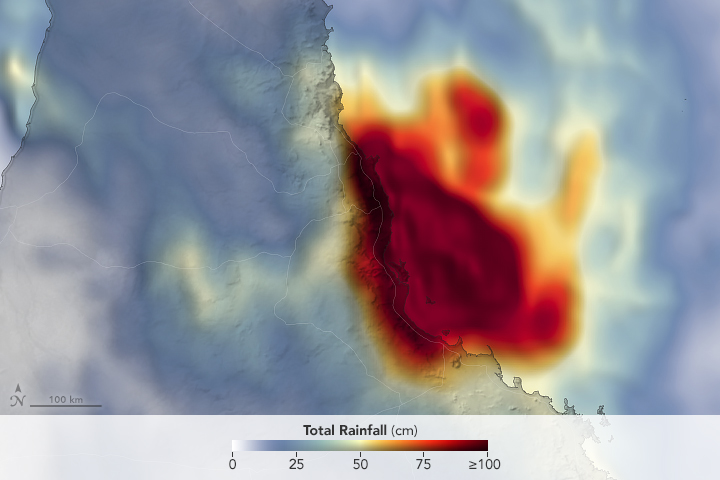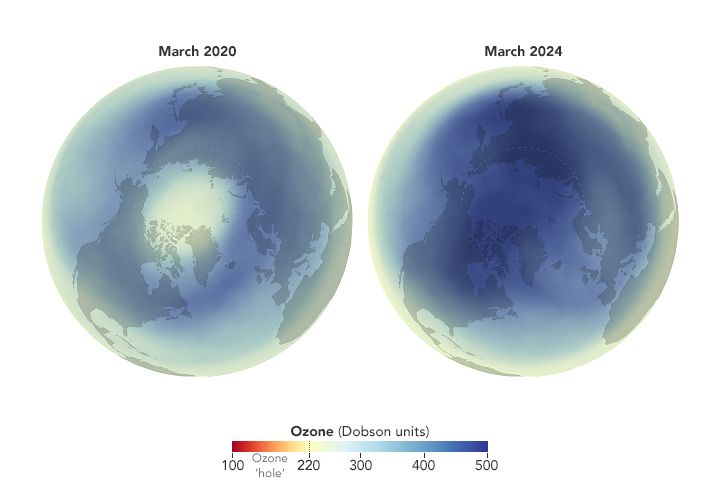- Home
- Missions
- Data
- Communications
- People
- The Earth Observer Newsletter




Recent Imagery
You will be directed to the NASA Visible Earth webpage when you select Images by Mission below, or click on the images at right that are randomly generated to represent four out of all possible topics.
You are here
Time-Resolved Observations of Precipitation structure and storm Intensity with a Constellation of Smallsats (EVI-3) (TROPICS)
Status:
Current
Mission Category:
Earth System Science Pathfinder Program, Earth Venture Class, Earth Venture-Instrument
Launch Date: May 7, 2023
The Time-Resolved Observations of Precipitation structure and storm Intensity with a Constellation of Smallsats (TROPICS) mission will provide rapid-refresh microwave measurements (median refresh rate of 21 minutes for the baseline mission, 31 minutes for the threshold mission) over the tropics that can be used to observe the thermodynamics of the troposphere and precipitation structure for storm systems at the mesoscale and synoptic scale over the entire storm lifecycle. TROPICS comprises 12 CubeSats (fully compliant 4.0 kg 3U) in three low-Earth orbital planes. Each CubeSat will host a high-performance radiometer scanning across the satellite track at 30 RPM to provide temperature profiles using seven channels near the 118.75 GHz oxygen absorption line, water vapor profiles using 3 channels near the 183 GHz water vapor absorption line, imagery in a single channel near 90 GHz for precipitation measurements, and a single channel at 206 GHz for cloud ice measurements. (Picture credit: MIT Lincoln Laboratory)
The TROPICS mission launch service will be competed under the agency’s Venture-Class Acquisition of Dedicated and Rideshare (VADR) launch vehicle contract, awarded in November 2022.
NASA selected commercial partner Astra in 2021 to provide launch services for TROPICS across three launches using the company’s Rocket 3.3 launch vehicle. On June 12, 2022, after a nominal first-stage flight, the upper stage of Astra’s Rocket 3.3 shut down early and failed to deliver the first two TROPICS CubeSats to orbit. NASA is participating in the launch investigation, led by Astra and the Federal Aviation Administration.
At 9 PM ET on May 7, 2023, Rocket Lab launched two TROPICS CubeSats in New Zealand, placing the 3U CubeSats into a 550-kilometer orbit at an inclination of 32 degrees.
Key Time-Resolved Observations of Precipitation structure and storm Intensity with a Constellation of Smallsats (EVI-3) Facts
| Mission/Portal Page: | https://tropics.ll.mit.edu/CMS/tropics/ |
|---|---|
| Altitude:Distance from sea level. | 550km |
| Inclination: | 32° |
| Origination: | NASA |
| Project Scientist(s): |
Scott Braun, NASA GSFC |
| Principal Investigator(s): |
William Blackwell, MIT Lincoln Laboratory |
| Other Key Personnel: |
Chris Bonniksen Ramesh Kakar |
Science Goals:
- Relate precipitation structure evolution, including diurnal cycle, to the evolution of the upper-level warm core and associated intensity changes
- Relate the occurrence of intense precipitation cores (convective bursts) to storm intensity evolution
- Relate retrieved environmental moisture measurements to coincident measures of storm structure (including size) and intensity
- Assimilate microwave radiances and/or retrievals in mesoscale and global numerical weather prediction models to assess impacts on storm track and intensity

